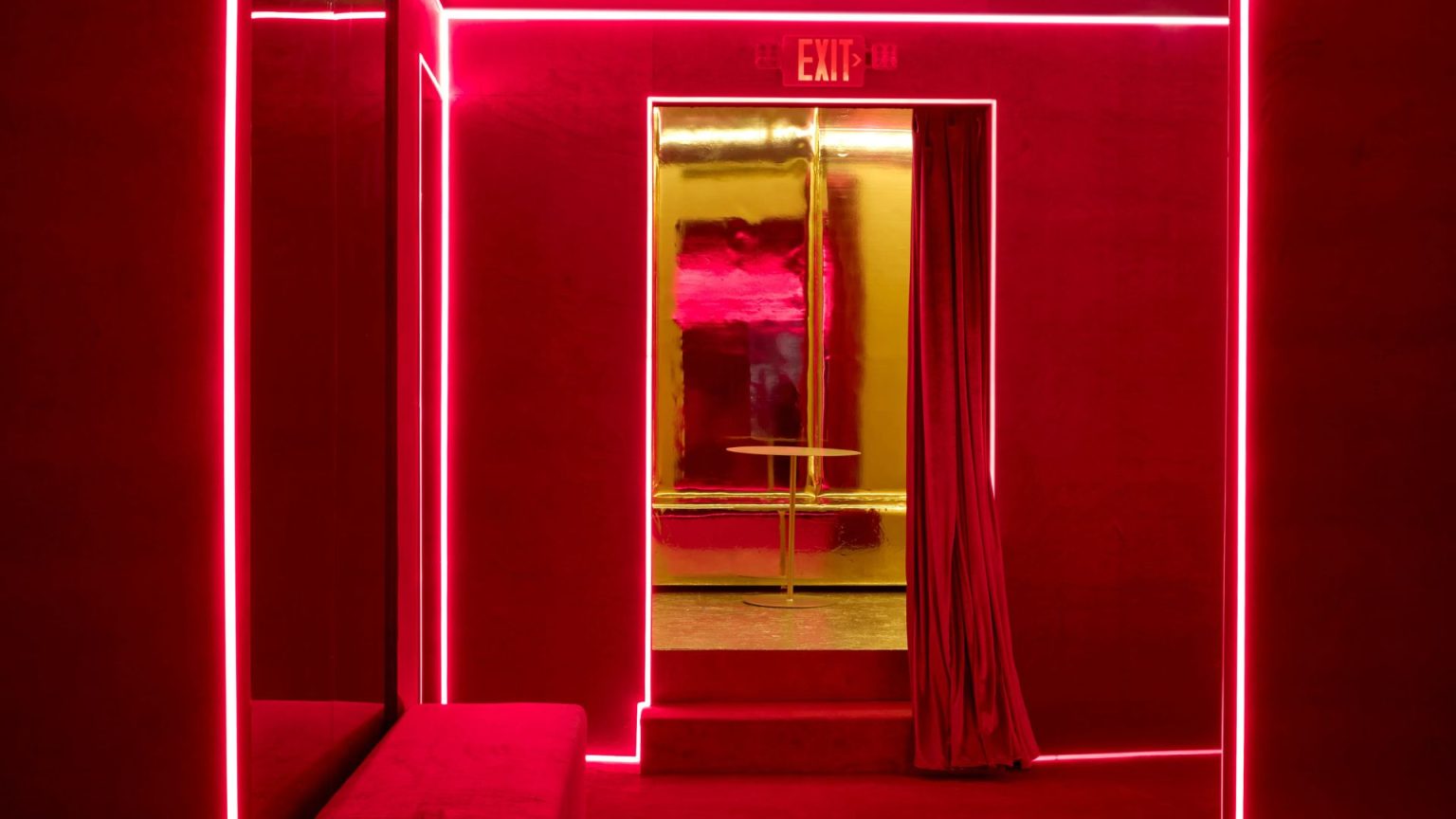David Lynch’s journey as an artist began with a simple yet profound act of defiance: coloring outside the lines. His mother, fearing that coloring books might stifle his creativity, discouraged their use when he was a child. This early inclination to break free from constraints would define Lynch’s career, as he went on to become one of the most groundbreaking and influential artists of our time. Spanning film, photography, music, painting, sculpture, and design, Lynch’s work is a testament to the power of unbridled creativity. His ability to bend mediums to his will and create something entirely unique has left an indelible mark on the art world. Whether through the surreal landscapes of his films or the meticulously designed interiors of his projects, Lynch’s artistry is a courageous act of creating outside the lines—a mindset that continues to inspire and intrigue audiences.
Lynch’s storytelling is unlike anything else in the world of film and art. His films and installations are characterized by a singular technique of ambiguous narratives, blending the macabre with the mundane in a way that feels both deeply unsettling and profoundly thought-provoking. His work often exists outside the realm of language, speaking instead to the intuition and the unconscious. Lynch’s ability to evoke feelings that defy easy articulation is a hallmark of his artistry. His imagery—whether in the form of a haunting melody, a distorted soundscape, or a meticulously crafted visual composition—lingers in the mind long after the experience is over. For Lynch, the surface is never to be trusted; his art is a portal to a world where nothing is as it seems, and where the mysteries that lie beneath are endlessly fascinating. This is the essence of what has come to be known as “Lynchian”—a term that captures the surreal, the enigmatic, and the inescapable darkness that permeates much of his work.
One of Lynch’s most tangible creations is Silencio, a Parisian lounge that he designed in collaboration with the club’s founders. Named after the infamous club in his 2001 film Mulholland Drive, Silencio is a physical manifestation of Lynch’s artistic vision. Spread over 700 square meters of underground space, the club is a labyrinth of intimate rooms and hidden corners, each designed to evoke a particular mood or sensation. From the ruby-red velvet curtains to the asymmetric black leather seats, every detail of Silencio reflects Lynch’s intuitive understanding of color, texture, and psychology. The club is more than just a place to gather; it is an immersive experience, a journey into a world that feels at once familiar and strange. Silencio’s New York outpost, which opened in early 2024, continues this tradition, offering a space where music, art, and design come together in a way that is quintessentially Lynchian.
Lynch’s work is not just about creating spaces; it is about creating experiences. His installations and designs are meant to be felt as much as they are seen. This was evident in his 2024 project, Thinking Rooms, presented during Milan’s Salone del Mobile. Curated by Antonio Monda and created in partnership with Piccolo Teatro di Milano, the installation was a deeply sensory experience, inviting visitors to step into a world of mystery and contemplation. The rooms were designed to evoke the stillness and danger that permeate so much of Lynch’s work, with their scarlet hues, enigmatic forms, and the ever-present possibility of things falling apart. For Lynch, the goal of Thinking Rooms was not just to create a visually stunning space but to inspire visitors to think differently—to emerge with a renewed sense of energy, happiness, and creativity. It was a reminder that Lynch’s art is not just about creating beauty; it is about creating a deeper understanding of the world and our place within it.
Throughout his career, Lynch has been drawn to the darker corners of life, exploring themes of violence, corruption, and the unsettling undercurrents that lie beneath the surface of seemingly ordinary locales. His films, from Eraserhead to Twin Peaks, are filled with moments of raw, unflinching honesty, challenging audiences to confront the parts of life we often try to ignore. And yet, for all their darkness, Lynch’s works are also infused with a sense of wonder and mystery. His dreamlike imagery and twisted tales of innocence and greed create a distorted view of life that is both unsettling and strangely beautiful. Lynch’s art is not about providing easy answers; it is about asking difficult questions and inviting us to explore the unknown.
In the end, David Lynch’s legacy is one of relentless creativity and a refusal to be bound by conventional norms. Whether through his films, his music, or his designs, Lynch has consistently pushed the boundaries of what art can be. His ability to evoke emotions, challenge assumptions, and inspire new ways of thinking has made him one of the most influential artists of our time. As John Steinbeck once wrote in a letter to John F. Kennedy, “A nation may be moved by its statesmen and defended by its military, but it is usually remembered for its artists.” David Lynch is one of those artists—a man whose feverish cinematic masterpieces, unrivaled approach to design, and unflinching honesty have left an indelible mark on the world. His artistry will linger in the air, a reminder of the power of creativity to transform and inspire.
